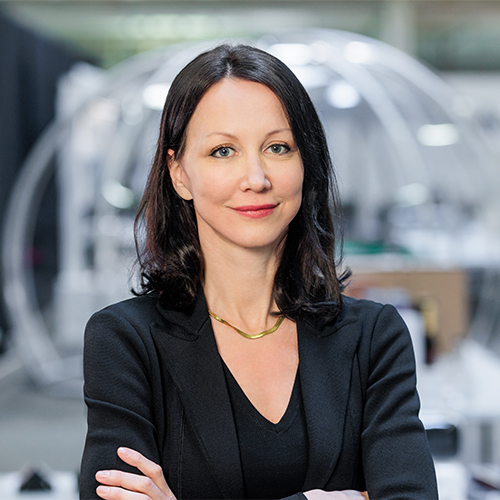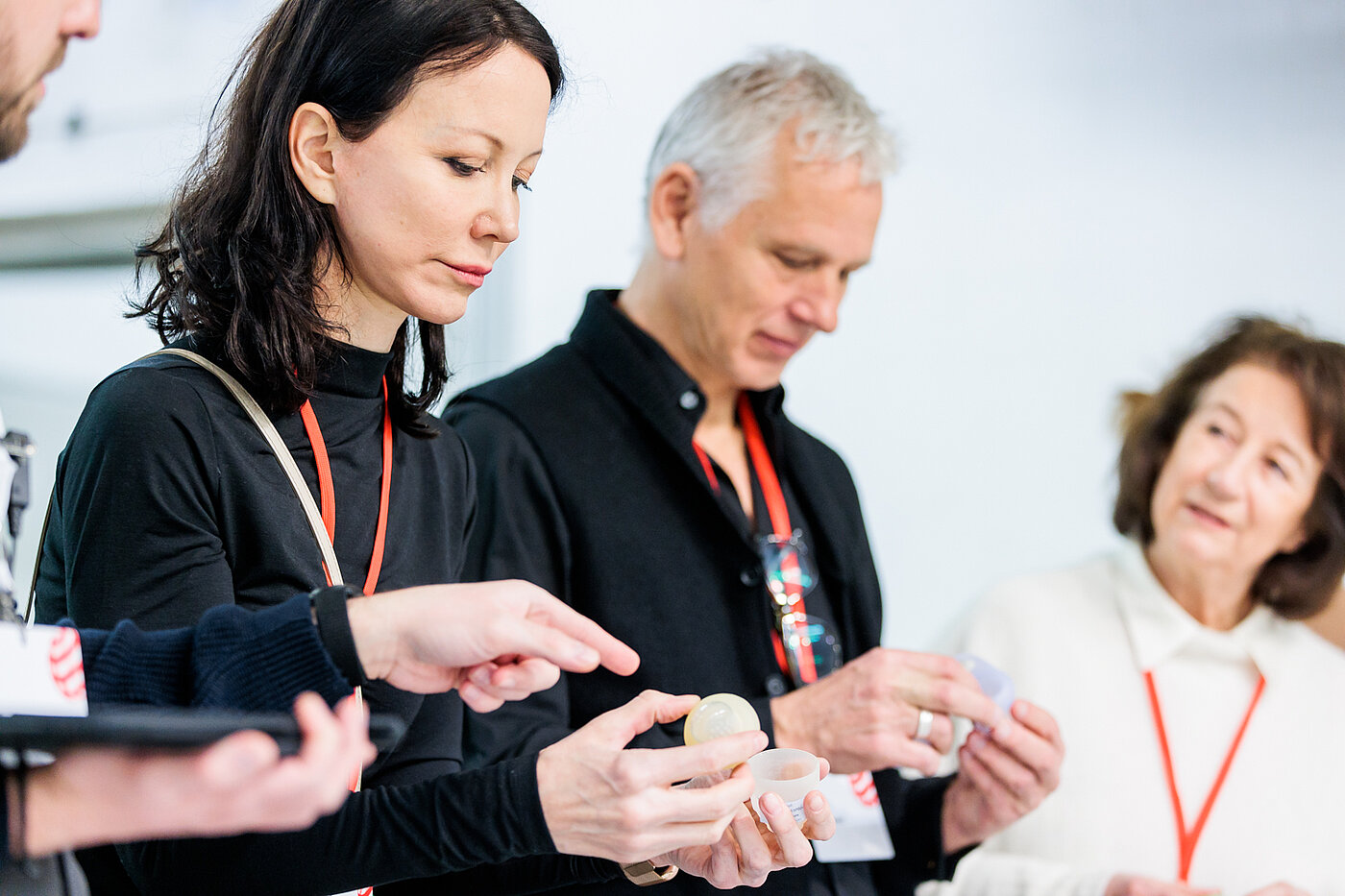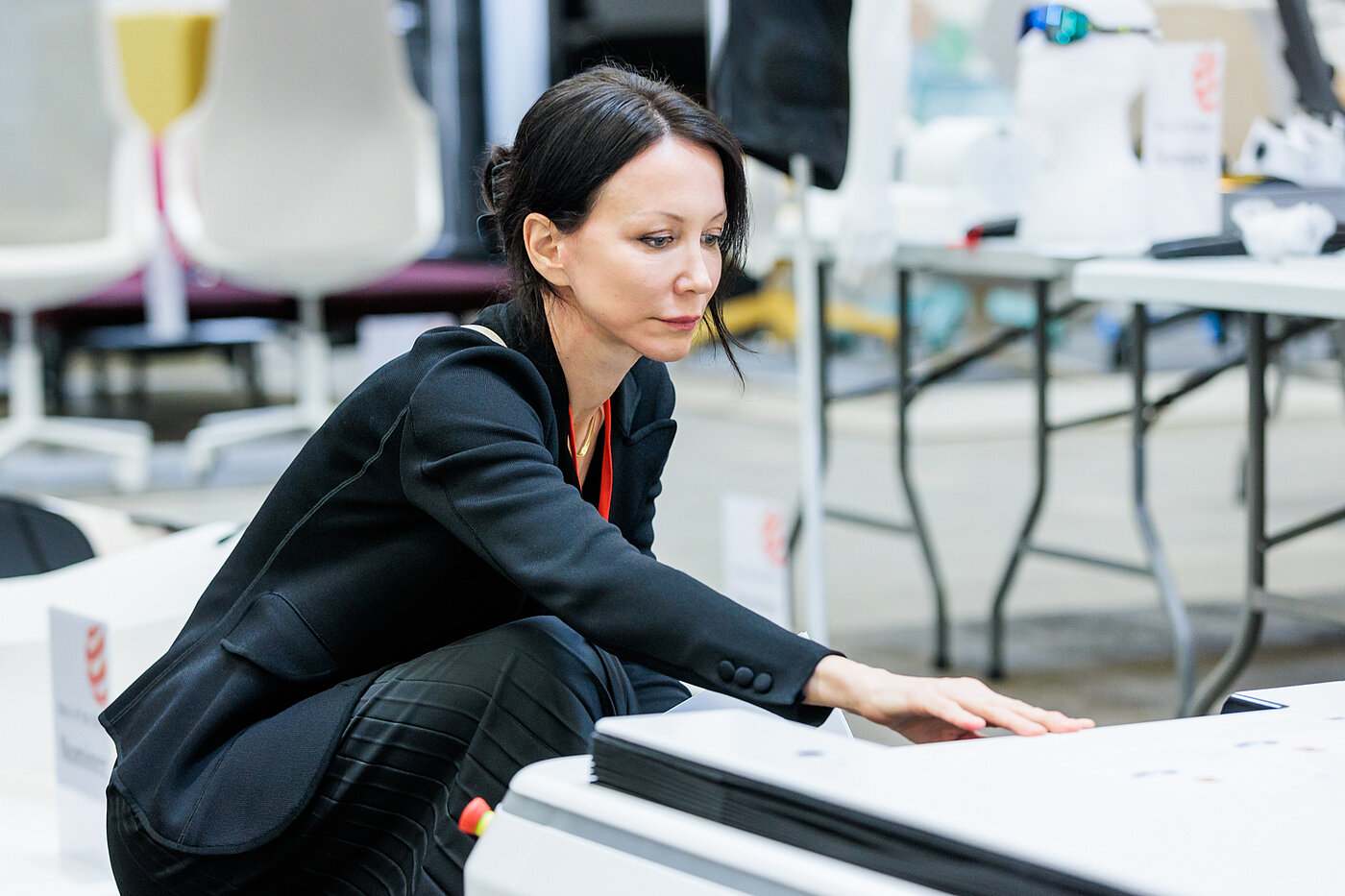Nina Mihovec
Nina Mihovec graduated from the University of Ljubljana, Academy of Fine Arts, in 1998 with a bachelor’s degree in industrial design and completed her master’s degree in 2012 at the University of Ljubljana, Faculty of Mechanical Engineering. She worked for various companies in the field of product design during this time, before deciding to take the plunge and set up her own business in 2000. Today Nina Mihovec works with a team of industrial designers and engineers in her studio Wilsonic Design, where she oversees the management, conceptual design and development of various projects for clients in a wide range of industries – from automotive and toys to the medicine, healthcare and nautical sectors. Nina Mihovec was also a member of large development teams and an external project manager in wide-ranging development projects. In 2014 she launched her new brand of minimalist toys and bedding for children, ooh noo.
Nina Mihovec has received numerous renowned design awards and exhibited many of her works during her professional career. She is also a speaker at international design conferences.

Red Dot in an interview with Nina Mihovec
Red Dot: You devote yourself to the product development of children’s toys, among other spheres. What is the special challenge here?
Nina Mihovec: I think good design should offer children space for creativity. This means taking a minimalistic approach and paying special attention to materials and safety. I will always stand for “less is more”.
As a product designer, you often collaborate with engineers on commissioned projects. To what extent can technical and creative expertise be mutually enriching?
The most important thing is that both sides understand and respect each other’s role. The designers should understand the technical aspect of the idea, and the engineers should value the design side. With this collaborative approach, which I see in many projects, the greatest ideas are born. What I see as being the most challenging is developing a new solution or innovation. The fussy front end when developing something completely new can be very demanding, for there are always tight deadlines. But this can lead to great results if all sides of the team are aligned.
Which industrial sector is the most exciting for you? Where can you develop the most personally?
This is a very difficult question, because I think all sectors are great for personal development. Maybe if I give you two extremes: for example, designing a bus or a baby toy. Both projects have their own special challenges, and both are very rewarding. Or if I give you another example: a valve drive housing. All of these projects have functional and user-oriented requirements. Even if a product is installed in the basement where no one sees it – still, that one time a year when the valve needs some adjusting, the user experience is very important. As important as a product that is used daily.
Are there trends or developments in product design that actually surprise you?
I would not really say surprise, but more that they make me happy. For example, the use of a braided carrycot and a metal wheelbase in the case of the Naturkind stroller. I was very happy when I first saw the product – and it was before the 2023 jury session – because it was a strong deviation from what we are used to seeing in strollers nowadays. This indicates that awareness is changing and that the willingness of manufacturers to use natural materials is continuously growing.
What challenges will product designers face in the coming years? And to what extent will, let’s say, AI play a role in this respect?
For now, I dare to think that AI might help us to analyse which products already exist on the market, so that we avoid doing something that is already there. I certainly find it challenging to thoroughly analyse a market segment because some areas are almost flooded with design variations. And maybe AI will help us to quickly arrive at various product concepts in the early development stage.
What distinguishes the design culture in Slovenia? And does product design have to be thought globally today?
We try to use and source local materials, as well as to maintain the local traditions. But all this is of course very difficult in times of globalisation. In any case, I think good design exceeds the borders of one country and should be considered globally acceptable. But in terms of any special looks or aesthetics, good design here in Slovenia doesn’t much differ from good design in other countries.

